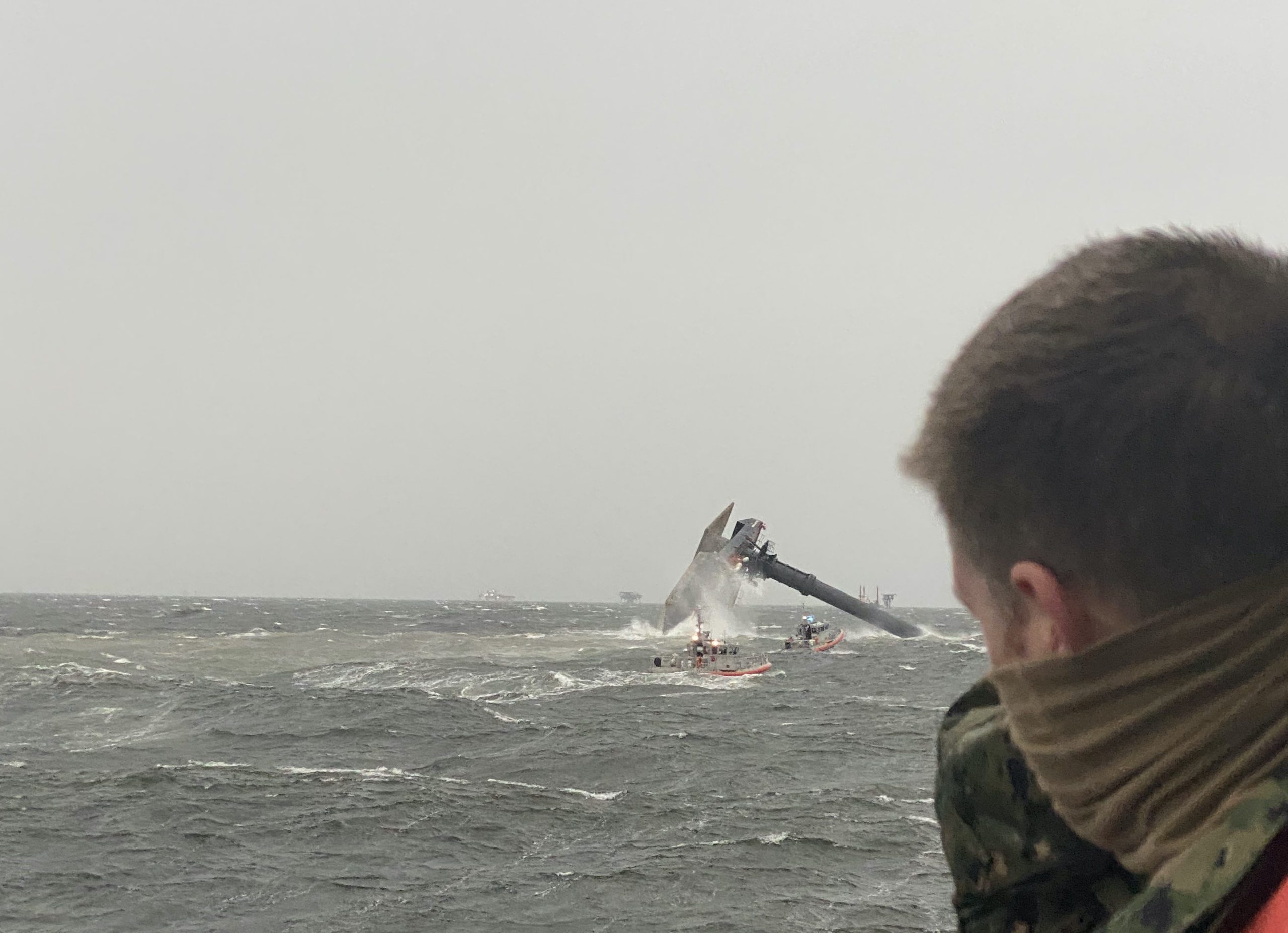Major Fire Breaks Out on Maersk Containership in Arabian Sea
A newbuild containership chartered by Maersk has suffered a major cargo fire in the Arabian Sea off the coast of India. The Indian Coast Guard (ICG) said Maritime Rescue Co-ordination...


The crew of the Coast Guard Cutter Glenn Harris, a pre-commissioned 154-foot Fast Reponse Cutter, pulls a person from the water April 13, 2021 after a 175-foot commercial lift boat capsized 8 miles south of Port Fourchon Louisiana. The Coast Guard and multiple good Samaritan vessels responded to the capsized vessel and searched for multiple missing people in the water. (U.S. Coast Guard photo courtesy of Coast Guard Cutter Glenn Harris)
The U.S. National Transportation Safety Board (NTSB) is set to hold a virtual public board meeting in October to determine the probable cause for the fatal 2021 capsizing of the liftboat Seacor Power.
On April 13, 2021, the Seacor Power capsized off the coast of Port Fourchon, Louisiana. Among the nineteen people aboard the vessel, six people were rescued by the U.S. Coast Guard and other vessels. Thirteen people were killed in the accident, including six whose bodies were recovered and seven who remain missing and are presumed dead.
The accident marked the worst offshore accident to hit the Gulf of Mexico since the Deepwater Horizon explosion more than a decade earlier.
The Seacor Power was built in 2002 and acquired by Seacor Marine LLC in 2012. It was operated by Seacor Marine and chartered to Talos Energy at the time of the accident.


A preliminary report from the NTSB issued in May 2021 revealed that the Seacor Power capsized as it was attempting to turn into the wind and lowering its legs to ride out a thunderstorm after having loaded offshore equipment in Port Fourchon earlier in the day.
Seacor Power’s First Mate told investigators that he was on the bridge with Captain Davide Ledet at the time of the capsizing, describing “white out” conditions as the vessel rolled to starboard. The body of Captain Ledet was recovered along with six others on the day of the accident.
According to the prelimary report, the vessel received an emailed weather report at 7:02 a.m. on the day of the accident, about five and a half hours before departing Port Fourchon, where it had loaded offshore equipment on its main deck bound for the Main Pass Block 138 lease area. The vessel capsized 3:41 p.m.
During the meeting, the NTSB’s board will vote on the findings, probable cause and recommendations as well as any changes to the draft final report.
The U.S. Coast Guard held a formal public hearing into the accident in August 2021. Over the course of the 10 day hearing, the board heard from 31 witnesses providing testimony into the conditions influencing the vessel prior to and at the time of the casualty.
Additional information has been added to the public docket for the investigation. The docket includes more than 11,000 pages of factual information, including interview transcripts, a meteorology report and other investigative materials.
The virtual meeting will take place on October 18th and a webcast will be available to the public at http://ntsb.windrosemedia.com/.
Join the gCaptain Club for curated content, insider opinions, and vibrant community discussions.


Join the 107,361 members that receive our newsletter.
Have a news tip? Let us know.
Access exclusive insights, engage in vibrant discussions, and gain perspectives from our CEO.
Sign Up




Maritime and offshore news trusted by our 107,361 members delivered daily straight to your inbox.



Essential news coupled with the finest maritime content sourced from across the globe.
Sign Up